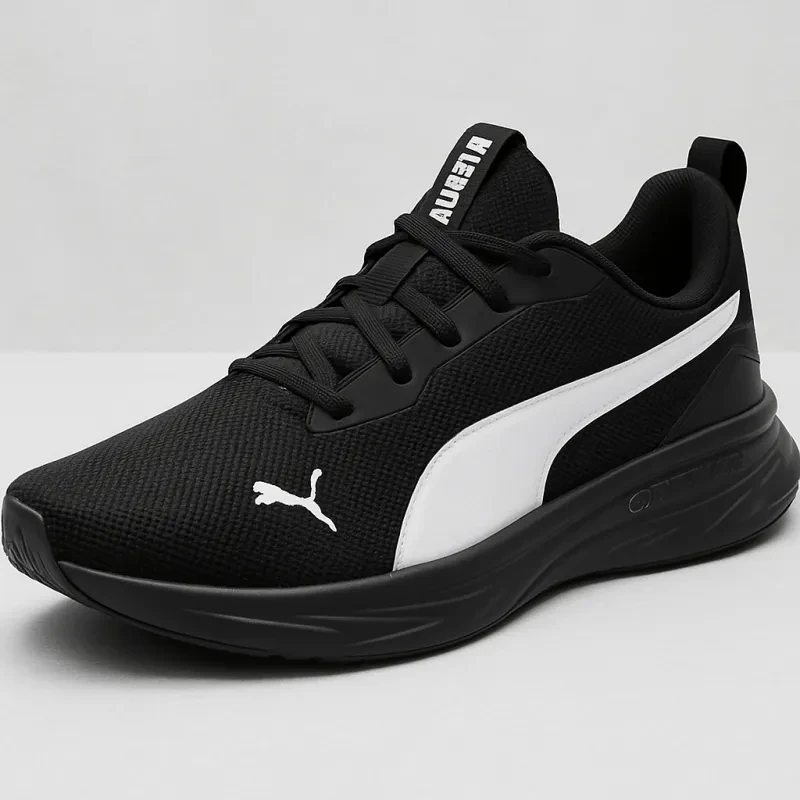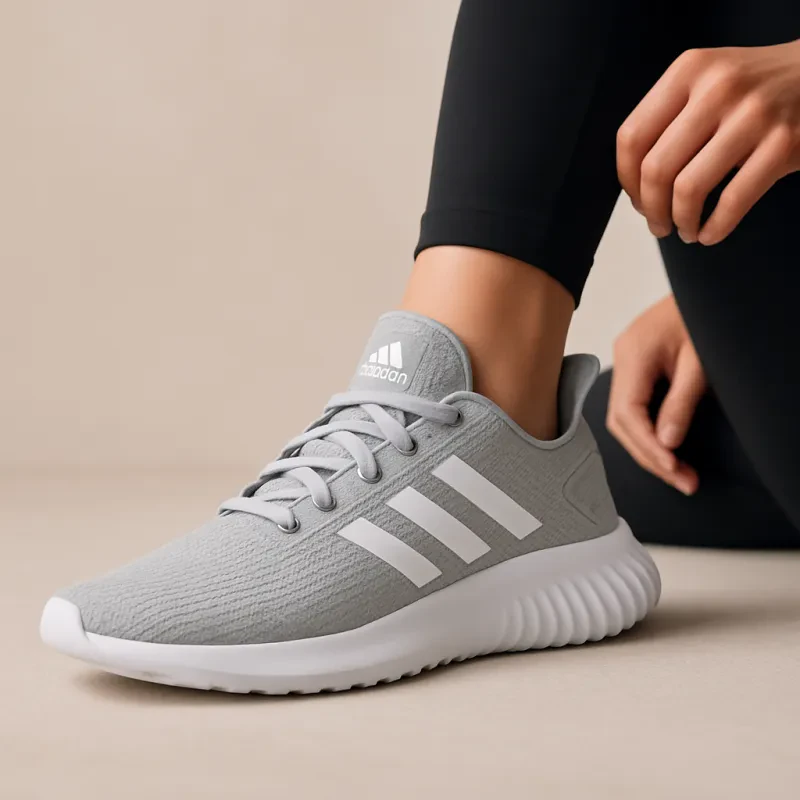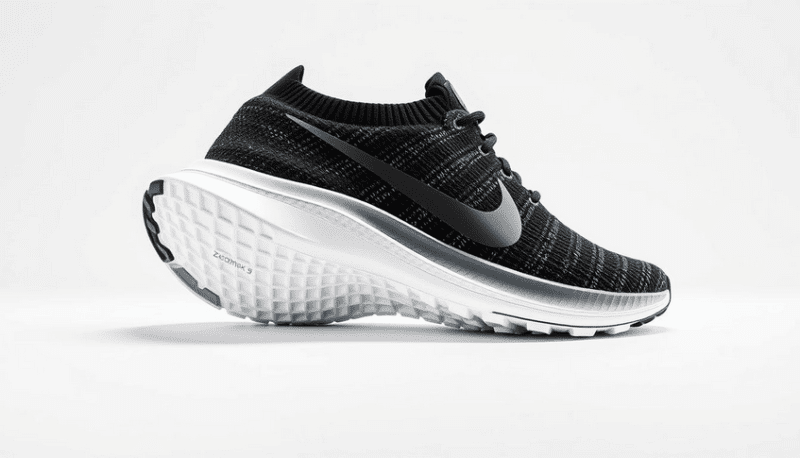Picking the right shoes matters way more than most of us realize, especially for pickleball. Running shoes and pickleball shoes serve totally different purposes, and honestly, the right pair can boost your game and help you steer clear of injuries. Sure, it’s easy to just grab whatever sneakers are lying around, but understanding the difference really pays off once you’re out on the court.

Let’s get into what separates running shoes from pickleball shoes. Once you see why the right shoes matter, you’ll get how much they can impact both comfort and safety. We’ll run through the main features, answer some common questions, and toss out a few tips for picking what works best for your game.
Key Takeaways
- Running shoes don’t handle side-to-side movement like pickleball shoes do.
- The right pickleball shoes make a real difference for comfort and safety.
- Shoes built for pickleball help keep injuries at bay when you’re on the court.
Key Differences Between Running Shoes and Pickleball Shoes
Running shoes and pickleball shoes each fit their own sport and movement style. These differences shape the support, feel, and safety you get while playing.
Intended Purpose and Movements
Running shoes help you move straight ahead. They’re built for smooth, forward motion—great for jogging, not so much for those quick side-steps.
Pickleball has you darting side-to-side, stopping fast, and changing direction on a dime. Pickleball shoes (and tennis or court shoes) focus on stability and grip for all those lateral moves.
If you try running shoes for pickleball, your feet might slide around inside. They just don’t have the side support you need for those sharp turns, which raises your odds of rolling an ankle.
Construction and Design
Running shoes usually come with thick soles, plush cushioning, and a curved shape that helps you roll forward with each step. That’s awesome for running, but it doesn’t keep your feet steady when you move sideways.
Pickleball and court shoes have flatter soles and wider bases. This makes them feel more planted and helps you stay upright. The sides often get reinforced to handle those quick stops and sprints.
Tread patterns? Totally different. Running shoes grip pavement or trails, but court and pickleball shoes use non-marking soles with grip patterns made for indoor or outdoor courts.
Materials Used
Running shoes stick with lightweight mesh and foam for breathability and comfort on long jogs. That keeps them flexible, but doesn’t do much for support when you twist or cut sideways.
Pickleball shoes use tougher materials, mainly on the sides and toes. That way, your feet stay protected when you’re sliding or stopping hard.
The soles on pickleball, tennis, and court shoes use firmer rubber that grabs the court better. They’re also designed not to leave marks, so you won’t mess up indoor floors. Walking shoes? They’re even softer and offer barely any side support—definitely not what you want for court sports.
Performance Features Comparison

Running shoes and pickleball shoes just aren’t built the same. We need to see how each performs on the court, not just in theory but in ways that really affect your game.
Traction and Grip
Traction’s huge in pickleball—you want to start, stop, and change direction fast. Pickleball shoes use special tread patterns on the rubber sole for extra grip on hard courts, indoors or out. That helps you avoid slips and gives you control when you cut sideways.
Running shoes? They’re all about forward motion, so their treads don’t grip the court as well, especially when you move laterally. You’ll probably feel your feet sliding if you wear them on a smooth court.
Court shoes focus on letting you stop and turn with confidence. Picking shoes with the right outsole for pickleball courts lowers your risk of falls or awkward twists.
Cushioning and Comfort
Running shoes usually pack the most cushioning in the heel and forefoot. That’s great for absorbing impact when you’re pounding the pavement. The midsole cushioning is softer, since it’s made for repetitive forward steps, not sudden cuts.
Pickleball shoes use firmer midsole cushioning and more balanced support. That keeps your feet stable when you jump, pivot, or lunge. Fit matters too—a roomy toe box lets your toes spread out when you stop or change direction.
Running shoes might feel softer at first, but pickleball shoes can actually feel better over a long match because your feet won’t slide around as much. That helps prevent blisters and foot fatigue when the pace picks up.
Support and Stability
Pickleball shoes really shine when it comes to side-to-side support. You’ll often see a firm heel counter that locks your heel in place. That way, your foot won’t slide inside the shoe during sharp cuts.
Court shoes give you more stability, so your ankles and arches don’t roll or twist as easily. Even “stability running shoes” mostly help with forward motion, not the quick stops and starts you need on a court.
Pickleball shoes also have tougher sidewalls, which protect your feet when you push off or move sideways. That extra support cuts down your risk of ankle sprains and other annoying injuries.
Durability on Court Surfaces
Durability comes down to how the shoe handles the court’s rough surface. The rubber soles of pickleball shoes are built to take the beating from hard courts, indoors or out. They resist fast wear from sliding, shuffling, and stopping suddenly.
Running shoes just don’t use the same rubber or sole thickness. If you use them on pickleball courts all the time, they’ll wear down quickly and lose grip and support.
Indoor and outdoor court shoes sometimes use different rubber—outdoor ones are usually thicker and tougher. If you’re playing a lot, it’s worth picking a shoe that’s known for lasting on the court. That way, your shoes last longer and you stay safer.
Specialized Pickleball Shoe Types and Features
Pickleball shoes are all about quick starts, stops, and side-to-side moves. The right features keep you comfortable and safe, whether you’re playing inside or out.
Indoor vs. Outdoor Pickleball Shoes
Indoor pickleball shoes work best on smooth surfaces like wood or gym floors. They use non-marking rubber soles, so you get solid grip without scuffing the court. Usually, the rubber’s softer, which helps with traction but wears out faster if you take them outside.
Outdoor pickleball shoes are tougher. They’re built for rougher stuff like concrete or asphalt, with thicker soles that last longer. The tread goes deeper for better grip and to stop you from slipping on dusty or loose courts. Here’s a quick breakdown:
| Feature | Indoor Shoes | Outdoor Shoes |
|---|---|---|
| Sole Type | Non-marking, soft | Durable, tough rubber |
| Surface | Gym, wood floors | Asphalt, concrete |
| Grip | High on smooth | High on rough |
| Durability | Less, wears faster | More, lasts longer |
Matching your shoes to the court really pays off—you get better grip and your shoes last longer.
Popular Models and Innovations
Some shoes just stand out. The Viper Court Pro and Gel-Renma are two favorites among pickleball players. The Viper Court Pro gives you solid grip and stays lightweight, so you can move fast and feel stable. The Gel-Renma is all about cushion and shock absorption, which helps if your feet get tired during long games.
Newer pickleball shoes keep getting better: improved midsole cushioning, reinforced toes, and added side support. Brands now use breathable mesh uppers and special lacing patterns to keep your feet cool and comfy. Shoe companies keep tweaking designs to handle the quick moves and constant action pickleball throws at you.
Style and Breathability
Pickleball shoes come in all kinds of styles, from bright colors to classic looks. Brands like Viper Court Pro and Gel-Renma offer plenty of color choices, so you can match your vibe or your team’s colors.
Breathability matters, too. Lots of shoes now have mesh panels on the sides and top to let heat and sweat escape. That keeps your feet cooler and helps prevent blisters, especially if you’re playing for hours. Some shoes even use moisture-wicking linings to keep things dry and comfortable on the court.
Choosing the Right Shoe for Your Game
What you wear on your feet really does affect your comfort, movement, and safety. Every sport asks for something a little different, so knowing what to look for makes shoe shopping way easier.
Factors to Consider for Pickleball
Pickleball means tons of side-to-side movement and quick turns. You’ll want shoes with strong lateral support and a non-marking sole made for courts. Running shoes just don’t have the structure or grip you need for this game.
For the best performance and fewer injuries, look for a sturdy upper and stable base. Shoes made for court sports like tennis or pickleball are your best bet. They help prevent ankle rolls and grip both indoor and outdoor courts better. If you play a lot, durability matters, especially on rough surfaces.
Look for these features in pickleball shoes:
- Lateral (side-to-side) support
- Good traction
- Firm, wide base
- Breathable materials
- Non-marking sole
When to Use Running Shoes
Running shoes are built for moving forward. They're cushioned and light, so they're comfy for jogging or walking, but not really meant for court games. If running shoes are all we've got, sure, we might wear them for casual outdoor pickleball, but honestly, the risk of injury goes up.
Running shoes just don't give us the side-to-side stability that pickleball demands. Their soles can't handle those quick stops and starts on a court. Our feet might slide or even roll if we try to use them for pickleball.
If we're playing pickleball more than once in a while, or if things get fast and competitive, it's a good idea to switch to court shoes. The right shoes keep us steady and help us avoid injuries.
How to Evaluate Fit and Performance
Fit really matters. Shoes should hug our heel and midfoot, but our toes need some space to move. It's smart to try shoes on at the end of the day when our feet are a bit swollen.
We should walk and move side-to-side in the shoes to check if they slip or pinch. Cushioning is nice, but for pickleball, support and stability matter more. The sole should grip the court but not get too sticky.
Weight and breathability count, too. Heavy or hot shoes just slow us down and make playing less fun. Replace shoes when the tread wears out or the support feels off. The right pair helps us play better and stay safe.
Frequently Asked Questions
People get confused about which shoes to wear for pickleball all the time. Different shoes have their own perks, and they can really change how we play or how well our feet hold up.
What are the primary differences between running shoes and pickleball shoes?
Running shoes are built for going straight ahead. They use cushioning to handle the impact from running forward.
Pickleball shoes, though, are made for quick side-to-side moves. They give us more stability and grip, especially for those sharp lateral motions on the court.
Can you use tennis shoes for pickleball or should you get specialized shoes?
Tennis shoes are a lot like pickleball shoes. Both let us move in every direction.
If we've already got sturdy tennis shoes, they're great for pickleball. Still, shoes made just for pickleball can sometimes be more comfortable, and they're often wider to support quick moves on the court.
What features should you look for in shoes designed for pickleball?
Look for strong side support, non-marking soles, and solid traction. Wide toe boxes let our feet spread out naturally.
Breathable mesh and a sturdy heel cup help us play longer and safer. A tough outsole keeps court shoes going on hard surfaces.
How do pickleball shoes differ from running shoes in terms of support and cushioning?
Pickleball shoes add extra lateral support to keep our ankles from rolling. Their soles are built for quick pivots and stops.
Running shoes use thick padding for forward impact. Pickleball shoes often have thinner midsoles, which makes it easier to move fast and stay light on our feet.
Are there specific brands that offer the best pickleball shoes for competitive play?
Several top brands make shoes for pickleball and racquet sports. We see ASICS, Nike, Adidas, and New Balance offering quality court shoes pretty often.
K-Swiss and Babolat also focus on wide, stable shoes for all kinds of players. There are plenty of good options out there, honestly.
What benefits do pickleball shoes offer that might not be present in regular running or training shoes?
Pickleball shoes let you stop fast and shuffle sideways without slipping. They grip the court better and give your feet more support on the sides than most running shoes ever could.
Since pickleball can get a little wild with all those quick direction changes, these shoes also hold your ankles steady. That extra support can make a real difference when it comes to dodging injuries—something regular running or training shoes just don't handle as well.


